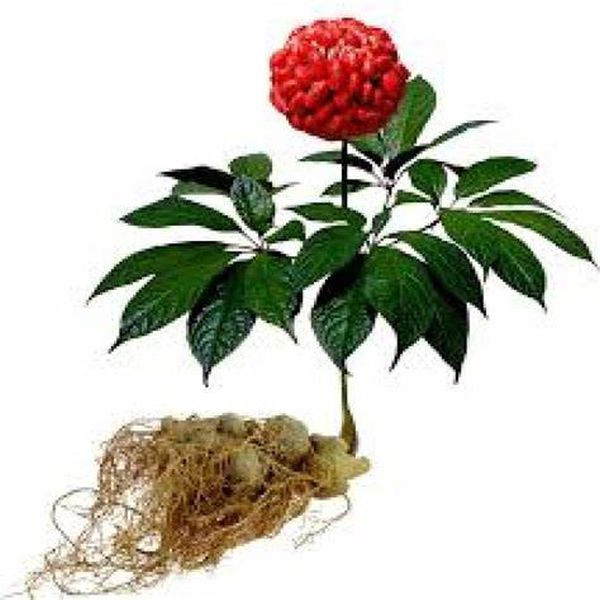Notoginseng (also occasionally referred to as pseudoginseng) comes from a perennial plant native to east Asia. It can reach a height of approximately four feet, with hermaphroditic flowers. In China, it grows primarily in the Yunnan and Guangxi provinces. The roots of notoginseng are used in herbal preparations. The roots are dug up in either the spring or winter; roots dug up in the spring are believed to be of better quality than those harvested in winter. After cleaning, the roots are dried in the sun and sliced.
According to the principles of traditional Chinese medicine, notoginseng has sweet, bitter and warm properties, and is associated with the Liver and Stomach meridians. Its main functions are to stop bleeding, remove blood stasis and invigorate the blood. Notoginseng root can act as an analgesic, and is also believed to have anti-inflammatory, antiseptic, astringent, cardiotonic, discutient and diuretic properties. It is used to improve circulation and relieve pain, and to treat bleeding and swelling due to external soft-tissue injuries. There is also evidence that it can enhance physical performance. It can be taken either internally or externally.
Panax noto-ginseng root is widely used to improve rheumatoid and osteoarthritis. It is also commonly used to alleviate sore muscles after exercise and to increase the capacity to exercise, including energy level. Panax noto-ginseng may also aid in the physical growth of children going through puberty, at least partly by assisting nutrient flow to the bones and throughout the body.
Research has been performed on notoginseng root in China and Japan, although many findings have not been translated into English. From notoginseng, researchers have isolated chemicals called saponins and flavonoids, substances that are active biologically in the body. Some of the saponins in notoginseng are believed to provide the raw materials for the creation of important hormones that regulate energy levels and sexual function. Notoginseng has also been reported to stimulate the immune system.
Other research has pointed to notoginseng‘s benefits for the heart and circulatory system. Through actions not completely understood, notoginseng appears to increase blood flow to the coronary arteries, which are the blood vessels that supply blood to the heart muscle. Heart disease usually results from blockages in the coronary arteries. Notoginseng also seems to increase the consumption of oxygen by the muscles in the heart. These actions have the effect of lowering blood pressure and regulating the rhythm of the heart.
Notoginseng is used to treat external and internal bleeding, including nosebleeds and bloody stools and urine. According to an American herbalist, notoginseng has been used in the United States for some years to control postpartum bleeding in women and heavy bleeding associated with menopause . As of 2002, some herbalists are recommending notoginseng as an alternative to hormone replacement therapy.
Notoginseng is also used as a general tonic for the heart and circulatory system, and for such specific problems as coronary heart disease and high cholesterol. Notoginseng is prescribed by Chinese herbalists to relieve the pain of angina pectoris, a condition that results in sharp pain in the chest region. It is also used for painful menstruation and for swelling and boils on the skin.
Post time: May-28-2020
